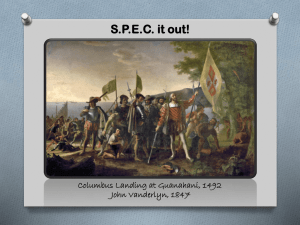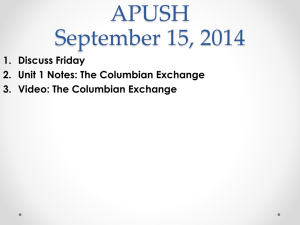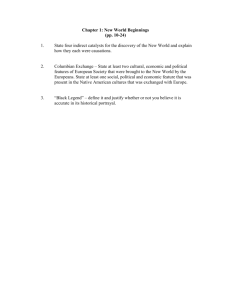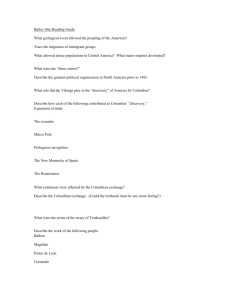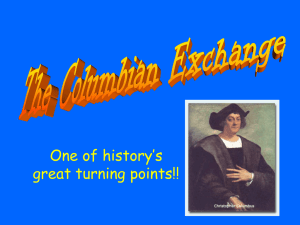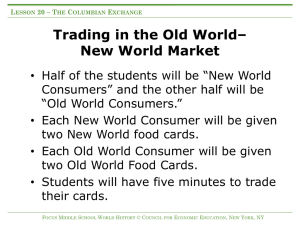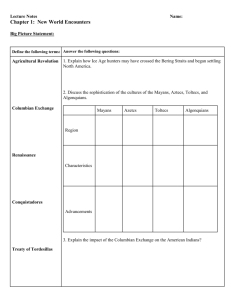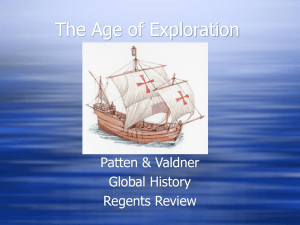Christopher Columbus and The Columbian Exchange
advertisement
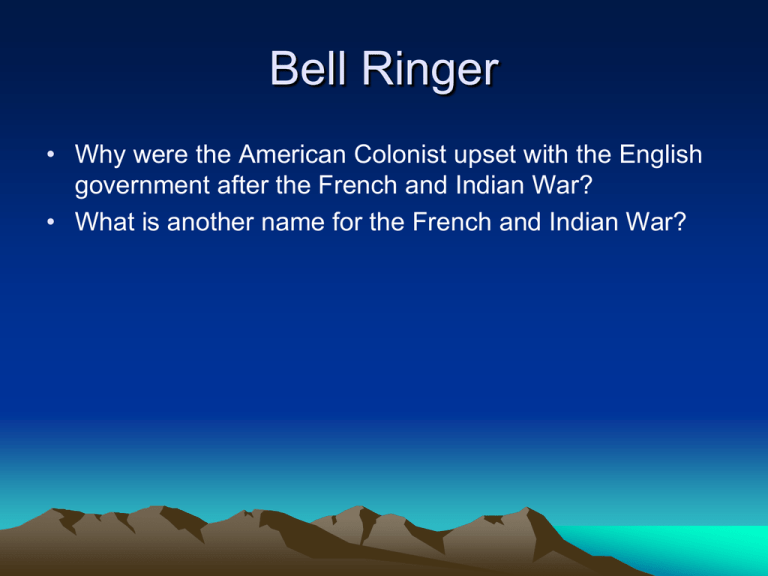
Bell Ringer • Why were the American Colonist upset with the English government after the French and Indian War? • What is another name for the French and Indian War? Agenda/Objectives • Quick Video: Columbus ship wrecked and left for dead? • Columbian Exchange: • Impact • What was traded? • Positives vs. Negatives • Capitalism, joint-stock companies, Mercantilism • Quick Video: Rise of the Ming Dynasty The Columbian Exchange Western Hemisphere (New World) Eastern Hemisphere (Old World) The Columbian Exchange • Columbus’ voyages May have had greater consequences biologically than culturally The Columbian Exchange was coined to describe the worldwide redistribution of plants, animals, and diseases that resulted from the initial contacts between Europeans and Natives. Impact of Columbian Exchange • Exchanged food, plants, and animals during colonization. Columbian Exchange • Old World (Europe) to New World (Americas) – Plants: • • • • • • • rice wheat barley oats coffee sugarcane bananas melons olives dandelions daisies ragweed Kentucky bluegrass Columbian Exchange • New World (Americas) to Old World (Europe) • • • • • • • – Plants: avocados pumpkins peanuts pineapple corn (maize) potatoes (white / sweet) beans (snap / kidney, lima) cacao (source of chocolate) chicle (source of gum) guavas squash tobacco Columbian Exchange • Old World (Europe) to New World (Americas) – Animals: • • • • • • horses cattle pigs sheep goats chickens Columbian Exchange • New World (Americas) to Old World (Europe) – Animals: • llamas • alpacas • guinea pigs Columbian Exchange • Old World (Europe) to New World (Americas) – Disease: • measles • chicken pox • smallpox • yellow fever • Malaria • influenza (flu) • common cold Columbian Exchange • New World (Americas) to Old World (Europe) – Disease • Syphilis • Hepatitis • Polio • Tuberculosis What was the Effect of the Columbian Exchange? 2. What was the effect of the Columbian Exchange? a. Both hemispheres were introduced to new foods and animals that changed entire societies. b. Potatoes and corn became major food sources for Europeans allowing populations to increase greatly. c. The introduction of pigs, cows, and horses gave new food sources and new animals for the Native Americans to use. What was the Effect of the Columbian Exchange? d. The diseases the Europeans brought with them killed up to 90% of the Native Americans in the New World. European conquest of the Native Americans was made easy by the effect disease had on the Natives. e. The Native Americans had never been exposed to these diseases so their bodies could not fight them. Europeans had lived with these diseases for thousands of year and were not as likely to die from them. Capitalism • Economic system based on private ownership and investment of resources. Joint-Stock Companies • Combined wealth to invest. • Shared profits, but less risky! • Mercantilism- Theory where a countries power depends on wealth. • I.E. more money equals more power! • Balance of Trade- Exports vs. Imports Exports Imports Colonies Trade • Colonies exported raw materials, such as wood and furs • European nations were able to make goods out of raw materials • Colonies then bought finished goods from Eruope Economic Revolution! • • • • Spurred growth of towns Many merchants became very wealthy Most people still lived in rural areas Mainly only traders and merchants gained social mobility • Mercantilism started to create national identity • Effects of Globalization?! Reading • grab a reading labeled “personal accounts of an enslave African” • While reading think about where each account is coming from and their bias. • Are they pro or anti slave trade? • What were the conditions of the middle passage for slaves?

